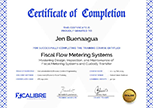| Date | Venue | Fee | |
|---|---|---|---|
| 16 Feb - 20 Feb 2026 | Boston - USA | $ 6,950 | Register Now |
| 18 May - 22 May 2026 | Istanbul - Turkey | $ 5,950 | Register Now |
| 29 Jun - 03 Jul 2026 | Dubai – UAE | $ 5,950 | Register Now |
| 14 Sep - 18 Sep 2026 | Sharm El Sheikh - Egypt | $ 5,950 | Register Now |
| 21 Dec - 25 Dec 2026 | Dubai – UAE | $ 5,950 | Register Now |
About the Course
When considering or researching supply dynamics together with optimisation, the question of “what came first, chicken or egg” springs to mind.
Dynamics identifies any difference between a system's actual and expected outcomes, enabling businesses to balance opportunities to drive new economic value and growth against the downside risks of any disruptive events. There is an increasing opinion that going forward towards the future, supply chains will influence winning business awards. Therefore, the agility with which a company handles its supply chain is becoming a mark of business excellence and a measure of advantage.
Optimisation is the adjustment of a supply chain's operations to ensure it is at its peak of efficiency. Such optimisation is based on specific key performance indicators, including overall operating expenses and company inventory returns. The aim is to provide customers with the products at the lowest total cost possible while retaining the highest profit margins.
This 5-day interactive Supply Chain Dynamics & Optimisation training course would be beneficial in achieving the goals of the participants; managers must balance costs incurred in manufacturing, inventory management, transportation, and fulfilment of customer expectations. Does dynamics influence the extent or success of a business based on an efficient or optimised supply chain, or will the dynamic extent of business opportunities influence an effective supply chain.
Core Objectives
The delegates will achieve the following objectives:
- Know what is meant by Optimisation and Dynamics
- Understand what to consider and measure when deciding on dynamics
- Recognise the various criteria that typically would influence an optimisation programme
- Compare and contrast the outputs of both activities.
- Develop an ability to identify interdependencies and formulate necessary business strategies
- Drive necessary strategies and tactics to ensure the optimum performance of a dynamic system
Training Approach
This training course will be conducted in classroom or virtual PowerPoint presentations, interactive discussion groups, case studies, and group tasks that provide practical work rather than teaching lectures. Moreover, online videos may be shown that will complement teaching materials.
The Attendees
This training course will benefit process creation that can enhance SCM business efficiency. It will improve understanding of the importance of optimum and dynamic SCM performance. It will highlight what resources to dedicate to this area of business.
Likewise, it will be valuable to the professionals but not limited to the following:
- Supply Chain Professionals
- Logistics & Procurement Professionals
- IT Professionals
- Marketing Professionals
- Operations Manager
- Project Managers
Daily Discussion
DAY ONE: SUPPLY CHAIN DYNAMICS
- What is a dynamic network in Supply Chain?
- SCM Principle 1: Adapt Supply Chain
- SCM Principle 2: Customise Logistics Networks
- SCM Principle 3: Align Demand Planning
- SCM Principle 4: Differentiate Product
- SCM Principle 5: Outsource Strategically
- SCM Principle 6: Develop Information Technology
- SCM Principle 7: Adopt Metrics
DAY TWO: PITFALLS OF OUTSOURCING
- Not Clearly Defining Expectations
- Leaving Offshore Team to Do Tasks Without Proper Guidance
- Not Measuring Team Performance
- Failing to Anticipate Other Expenditures
- Not having a Growth Plan for Offshore Team
- Providing Unsatisfactory Compensation
- Not Managing Data Security and Confidentiality
- Financial and Reputation Risks
- Less Flexibility
DAY THREE: USING ANALYTICS IN THE SUPPLY CHAIN
- Importance of Demand Planning
- Elements of Demand Planning
- Major Challenges in Planning Demand: Planning vs Forecasting
- Optimised Sourcing and Logistics Procedures
- Smarter Logistics to Enhance Visibility
- Reduced Volatility through Inventory Management
DAY FOUR: OPTIMISING A SUPPLY CHAIN
- Supply Chain Optimisation
- Supply Chain Cycle
- Applications
- Approaches and Solutions
- Addressing Business Concerns
- Goals of Supply Chain Optimisation
DAY FIVE: SUPPLY CHAIN FUNCTIONAL RESPONSIBILITIES
- Logistics
- Warehousing
- Supplier Base: Components and Raw Materials
- Retailers
- Supplier Selection and Management
- Managing the Supply Chain
- Supply Chain Optimisation Evolution Over Time
Certificate Awarded
Upon successful completion of this training course, participants will be awarded a Certificate of Completion from XCalibre Training Centre, acknowledging their accomplishment. This certificate serves as a testament to their dedication to developing their skills and advancing their expertise in their respective fields.


